The grid can be imagined - and in some cases is - a single generator. The generator has a speed governor to maintain the frequency. The governor will have a certain reaction time and that means that should the load suddenly increase that the frequency will drop and if the load suddenly decreases the frequency will suddenly rise.

Figure 1. A mechanical governor. The vertical shaft is driven by the engine and the faster it goes the more the weights are thrown outward and upward (against gravity) causing the lever arm to reduce throttle. Source: Centrifugal governor.
I worked on one of these on a 1 MVA generator and, with the aid of a reed frequency meter was able to set the frequency of the generator very close to 50 Hz.
In a large distribution grid, it is said that consumers and producers must be in balance;
Correct. In your basic grid network there is no storage. The generators can only export if there is a load. The generators may be spinning and producing voltage but if there is no load then no current will flow. The energy source (steam, diesel, hydro, etc.) will have to be reduced quickly to prevent the frequency increasing.
perfect balance doesn't exist in nature
Yes it does. The floor beneath me is providing an upthrust which exactly matches the force of gravity on my body.
... and I'm fighting to understand how the out of balance system either stores and retrieves energy, ...
It doesn't.
... and at what time scale the balancing done.
That depends on the physical governor.
What are the short term energy flows?
Energy flow is determined by the load.
When I turn on a light switch, power flows in the instant. Where is it taken from?
From the generator via the grid.
How much energy is present in the distribution network itself at any given time? Does it fluctuate?
Is there a good yet accessible description of the elasticity of the power system? Does it vibrate?
